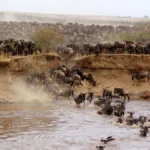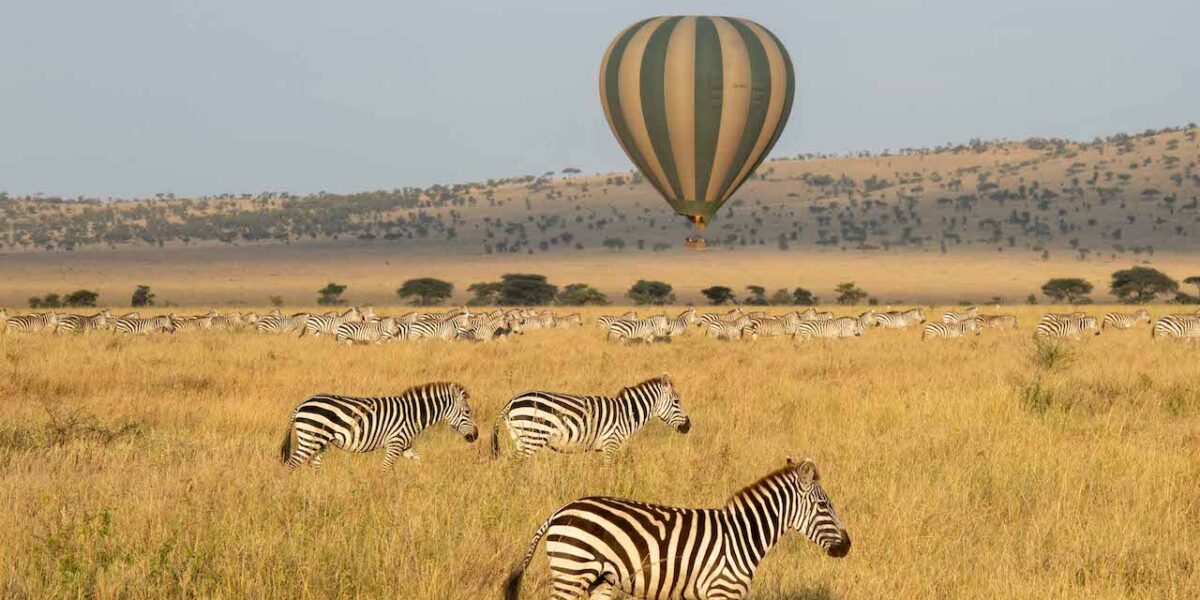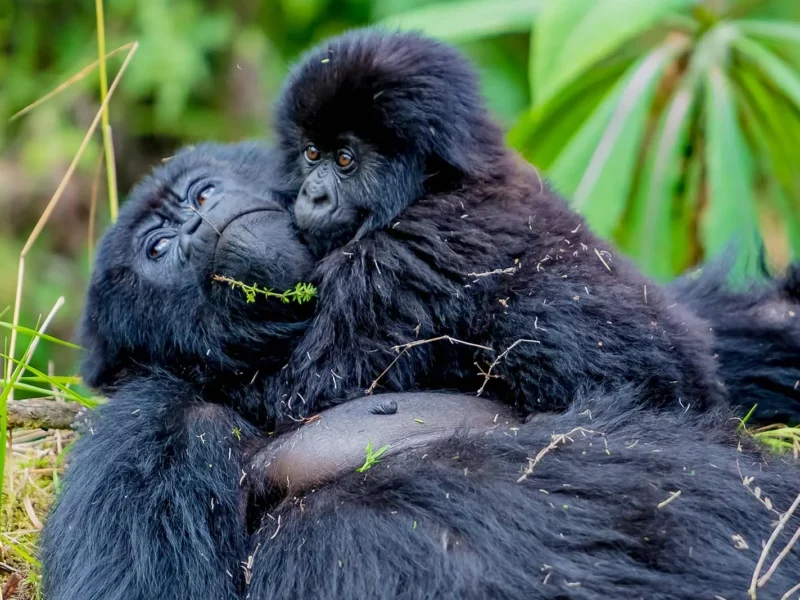
The Most Frequently Asked Questions About Gorilla Trekking (Answered)
November 17, 2025
The Best Time to See the Great Migration in Kenya
November 19, 2025The Best Time of Year to Visit Serengeti National Park — And How Terenga Safaris Can Help Make It Happen
Serengeti National Park in Tanzania is one of the most iconic wildlife destinations on Earth and the timing of your visit can dramatically shape your experience. Depending on when you go, you might witness newborn wildebeest, see dramatic river crossings, or simply enjoy peaceful landscapes without the crowds. Here’s a full guide to the best times to visit the Serengeti, what you can expect in each season, and how a company like Terenga Safaris can help you plan the perfect safari adventure.
Why Timing Matters for a Serengeti Safari
The Serengeti’s wildlife dynamics are deeply influenced by seasonal changes. Rainfall, grass growth, and water levels all affect where animals congregate at different times of year. For many visitors, the most compelling draw is the Great Wildebeest Migration, a vast annual movement of wildebeest (and zebras) across the Serengeti-Mara ecosystem.
But beyond the migration, each season brings its own magic:
- River crossings that are thrilling and dramatic
- Calving season with thousands of young animals and predator activity
- Lush, green landscapes and abundant birdlife
- Fewer tourists and better rates
When Is the Best Time to Visit: By Season
Here’s a breakdown of Serengeti’s seasons, what you might see, and when to go depending on your priorities.
1. Dry Season (June to October)
Why go: This is widely regarded as the peak safari season. Wildlife viewing is excellent because water is scarce, so animals congregate around rivers and waterholes.
- Migration highlight: From July to October, you can often witness the dramatic river crossings for example at the Mara River in the northern Serengeti.
- Conditions: Clear skies, sunny days, relatively few mosquitoes. However, mornings and evenings can be quite chilly.
- Considerations: Because this is the most popular time, there are more tourists and lodges may fill up fast.
2. Calving Season (December to March)
- Why go: This is when hundreds of thousands of wildebeest calves are born, especially in the southern Serengeti (Ndutu area).
- Wildlife drama: The high concentration of newborns attracts predators (lions, hyenas, cheetahs), making for powerful predator-prey scenes.
- Scenery: The plains are lush and green thanks to the short rains, which nourish fresh grass.
- Crowds and cost: Moderate. This is popular, but not quite as crowded as peak “dry” migration months; rates can be more favorable than peak season.
3. Transition / Green Season (April to May & November to May)
- Why go: These months offer a quieter, more intimate Serengeti experience.
- Birdlife: Peak for birdwatchers — migration birds, lush foliage, and active ecosystems.
- Landscape: Verdant, photogenic plains.
- Challenges: Some roads may become muddy, especially during heavier rains (March–May).
- Benefits: Lower accommodation rates, fewer visitors, and a more peaceful safari feel.
Which Time Is “Best” — It Depends on Your Priorities
Here’s a quick guide depending on what you want out of your Serengeti safari:
- For the Great Migration river crossings → Aim for July to October
- For calving season and predator action → Go between December and March
- For budget travel, fewer crowds, and green landscapes → Consider April–May or November
- For birdwatching → The wet/green season is ideal
How Terenga Safaris Can Help You Plan Your Serengeti Safari
If you’re considering a trip to the Serengeti, Terenga Safaris is one company that offers expert-guided tours tailored to your timing and interests. Here’s how they can make your safari experience smoother and more meaningful:
1. Specialist Knowledge
- Terenga Safaris has detailed insights into Serengeti’s different zones — southern plains, western corridor, northern Mara — and how wildlife movements change through the year.
- They can advise on the best areas to focus on depending on your travel dates, maximizing your chances of seeing what you came for (e.g., crossing, calving, big cats).
2. Customized Itineraries
- Whether you want a short game-drive safari, a luxurious multi-day trip with hot-air balloon rides, or a walking safari, Terenga Safaris can build a plan that fits your style.
- They also integrate cultural elements (such as Maasai experiences) if that’s something you value.
3. Logistics & Comfort
- They handle all the logistics: park permits, transport, accommodation, guides, meals — so you don’t have to worry about the complex planning.
- Because Terenga has experience across seasons, they understand how to navigate the challenges of both the dry and rainy seasons (e.g., road conditions, lodging availability).
4. Sustainable & Ethical Tourism
- According to their site, Terenga Safaris cares about conservation and works to promote responsible tourism in Tanzania.
- Their trips support local communities and help ensure that tourism benefits both nature and people.
Final Thoughts
- There isn’t a single “best” time to visit Serengeti it really comes down to what you want to see and experience.
- For many, July–October offers the iconic river crossings and peak wildlife viewing. For others, calving season (Dec–Mar) is unmatched for its drama.
- If you’re working with a safari company like Terenga Safaris, you can tailor your trip to hit the right moments in Serengeti’s annual cycle — maximizing value, comfort, and wildlife encounters.



